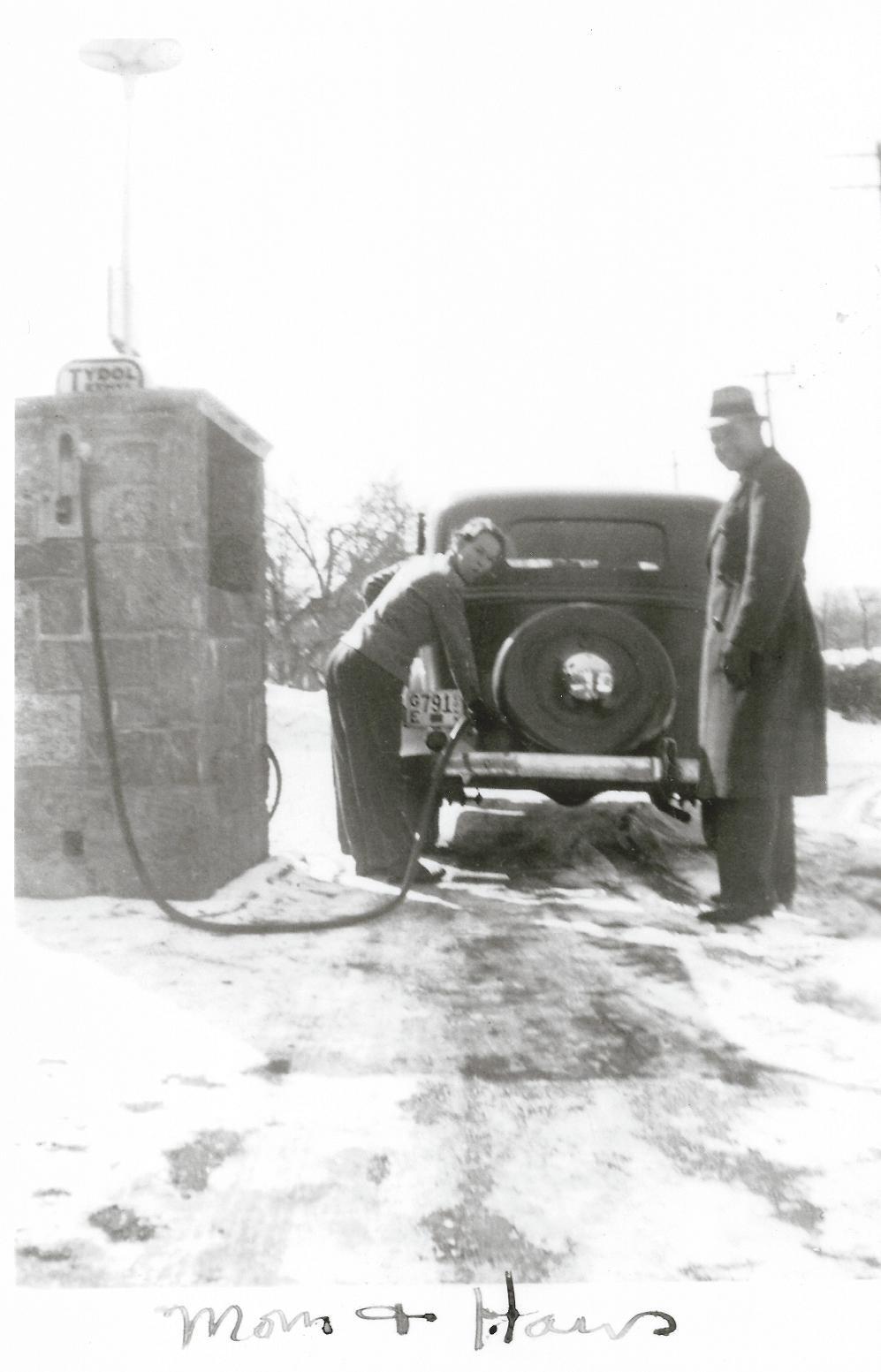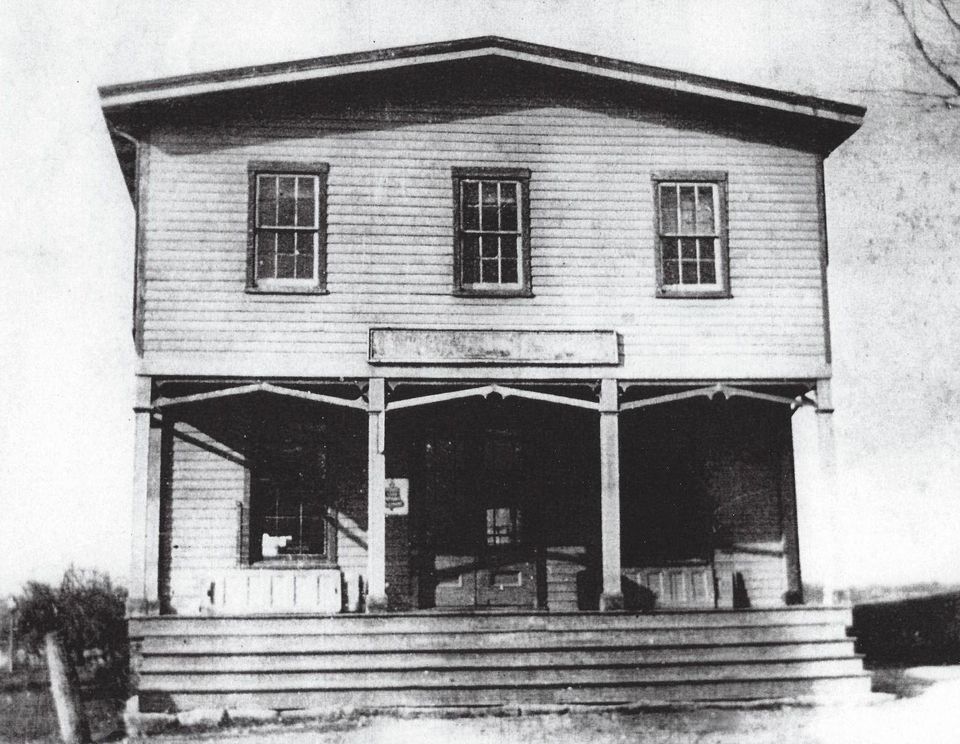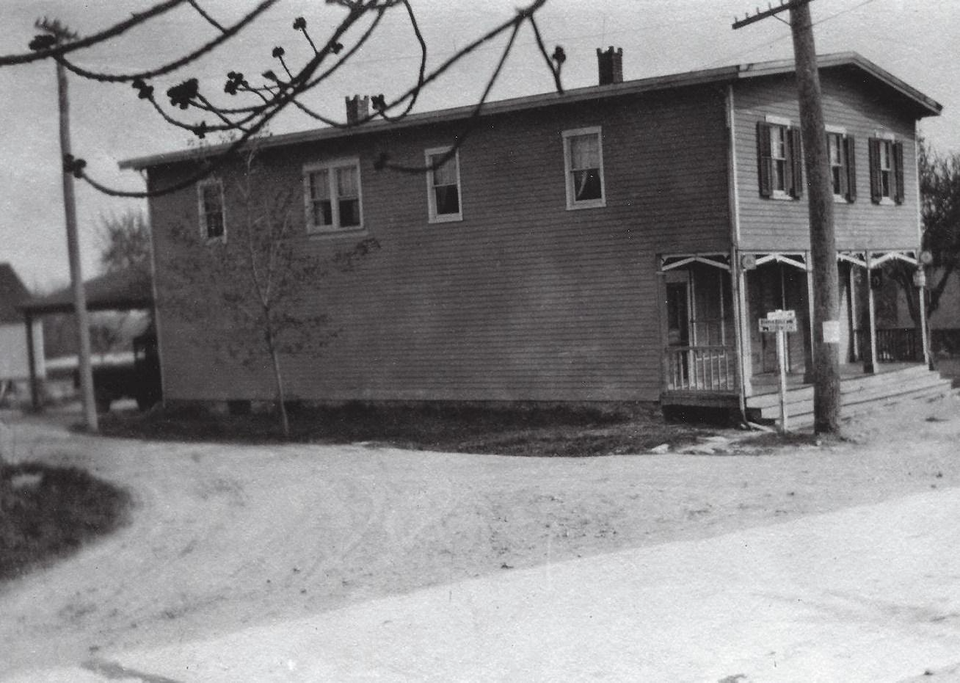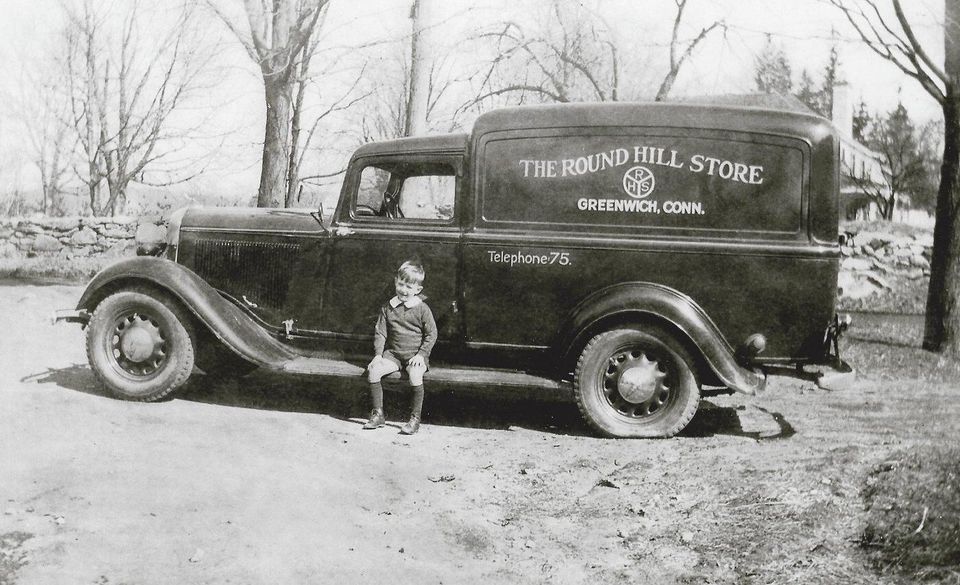Of course with the automobile, came the need for gas, and a pump was installed sometime in the 1920s. Here is Granny (Connie Strain) pumping gas (in slacks – quite a modern woman) with one of the regulars.
MAP OF ROUND HILL IN 1867
Round Hill History
Welcome to historic Round Hill
1800s
The Round Hill Post Office
This 1934 Dodge Brothers Humpback Panel Delivery Truck was used to deliver goods to customers in Round Hill. Young Billy Strain is sitting on the running board. Also shown is the original telephone number 75 still owned by the business today 869-0075 (used as a fax)

The post card below shows the Black Smith Shop still standing (privately owned but beautifully renovated) across the street and begs the question, was this a stagecoach stop in the early 1800s?
Just down the street the historic Old Mill for which Old Mill Road is named still stands today and is listed on the National Register of Historic Places (90001109) that explains its significance "The Sylvanus Selleck Gristmill, also known as the Edwin Knapp Gristmill, was built in 1796 and purchased from Selleck by Knapp around 1860. Erected on Converse Pond Brook its significance is due to the distinctive characteristics of a rural CT gristmill in addition to its age. The braced-frame construction retains elements of the waterpower system and operating equipment typical of gristmills built in the late 18th to mid 19th centuries. Historically significant as it served the Round Hill agricultural community by processing staple grains for local farmers. Edwin Knapp used the mill to provide feed for livestock as the need for producing staple grains declined. The Selleck Gristmill is one of two known surviving 18th-century gristmills making its value incalculable in terms of scarcity."













